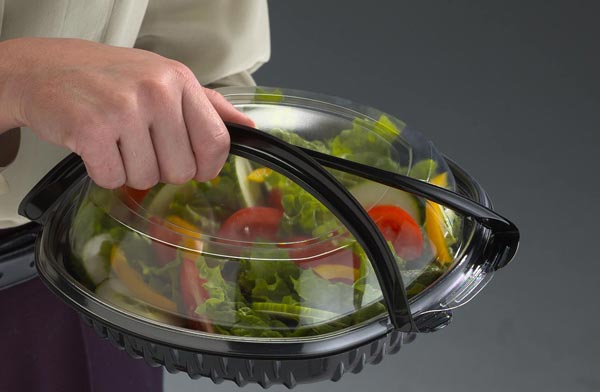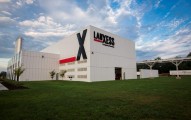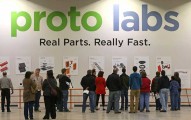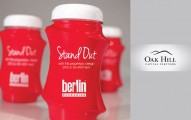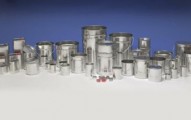Plastic Unwraps New Opportunities in Packaging
The plastics industry is clearly energized by the promise of material replacement in packaging. Plastics continue to make the leap into other market segments within packaging that were typically dominated by glass, aluminum, or paper.
Innovation in plastic packaging has brought plastics into these new areas. In fact, Michelle Lamontagne, marketing development specialist at FLEXcon, a manufacturer of pressure-sensitive film products, believes that’s a large part of the concept of flexible packaging.
“It’s really meant to replace the traditional aluminum can and glass containers – it’s intended to replace those traditional materials that are used,” said Lamontagne. “In terms of transit, it’s lighter to ship than glass and it’s certainly more durable in terms of not breaking and endangering the product’s end use. Really, there’s a whole series of benefits of plastic as opposed to glass or aluminum.”
At the same time, the use of plastic packaging is also turning into a good sustainability story. A recent study, prepared by Franklin Associates for the American Chemistry Council (ACC) and the Canadian Plastics Industry Association, determined that six categories of plastic packaging help to significantly reduce energy use and greenhouse gas emissions compared to packaging alternatives made with other materials. The study aims to provide a transparent, detailed life-cycle assessment that quantifies the energy and climate benefits of using various types of everyday plastic packaging compared to alternatives.
“We all know that plastic packaging plays a critical role in protecting and preserving everything from groceries to high-end electronics. This study demonstrates that plastic packaging also makes a significant contribution to sustainability by dramatically reducing energy use and lowering greenhouse gas emissions,” said Steve Russell, VP of ACC’s plastics division.
Flexible packaging expands with the pouch
The North American and European flexible packaging markets are estimated at $20.7 billion and $16.4 billion, together accounting for almost half of the global consumer flexible packaging market of around $76 billion in 2013. However, recent research by PCI Films Consulting shows that growth in North America at around 4% p.a. by value is currently twice as fast as that experienced in the last year in Europe.
In the past, North American consumers have been more conservative with regard to the adoption of new flexible packaging formats than their European counterparts, and packers often have been reluctant to replace existing rigid filling capacity with new flexible packaging alternatives, PCI states. However, this is now changing, as consumers recognize the lightweight portability and convenience, particularly of single-serve flexible formats with easy-open and reclose features, and also the environmental advantages of flexibles.
This rapid growth in flexible packaging is, in part, driven by the growth of the pouch.
“The demand for flexible pouches is growing to accommodate the lifestyle of people today,” said Lamontagne of FLEXcon. “People are busy and are on-the-go, and they look for something that is convenient for their lifestyle. I think pouches offer a lot of obvious benefits in terms of the lifestyles of people today.”
The Freedonia Group recently took a closer look at pouches and says that demand for pouches in the U.S. is projected to increase 4.6% per year to $9.4 billion in 2018. Growth will be fueled by continued solid opportunities for stand-up pouches stemming from functional, sustainability, and marketing advantages over alternative packaging designs. Overall pouch unit demand is expected to expand 2.7% yearly to $92 billion. Advantages of superior aesthetic appeal, portability, lightweight, reduced material use, and significantly lower shipping costs relative to rigid containers will foster strong acceptance in a broad range of consumer packaged goods uses.
Stand-up pouches will remain a major growth segment in the overall packaging industry, with demand forecast to expand 6.5% annually to $2.4 billion in 2018. Advances will reflect rising interest among packaged goods companies based on cost savings due to lighter weight and lower material use compared to rigid containers. Also supporting gains will be the ability of stand-up pouches to differentiate and draw attention to products on store shelves due to their large front panel billboard space and the perception of pouches as a more contemporary packaging format than traditional container types, such as cans, bottles, and cartons.
Demand for flat pouches is forecast to increase 4.0% annually to $7.0 billion in 2018, driven by faster advances for four-side-seal pouches in medical and pharmaceutical markets. Four-side-seal pouches will also experience favorable growth in certain food applications such as meat, poultry, and seafood, and sauces and condiments. In addition, robust gains are anticipated in nonfood uses such as soaps and detergents due to the rising popularity of unit-of-use products packaged in dissolvable pouches. In general, however, flat pouch demand will lag increases for stand-up pouches due to already high usage in many markets and competition from stand-up pouches.
Food and beverage markets comprise the majority of pouch demand, accounting for 80% of the total in 2013. Through 2018, growth will be similar to the overall pouch average, with the pet food; meat, poultry, and seafood; beverage; and produce markets expected to post the fastest gains. Nonfood markets for pouches will grow more rapidly than food and beverage markets, based on the further development of new applications in consumer goods resulting from sustainability advantages and strong opportunities for dissolvable pouches for laundry detergents.
Don’t forget about rigid
The rigid plastic packaging market is set to flourish in the next 10 years and Visiongain has determined that the market will reach $168.7 billion in 2014. However, rigid plastic packaging is facing strong competition from rival packaging materials that are often lighter and cheaper to manufacture and transport, as experienced in many of the rigid plastic packaging end use submarkets.
“All packaging markets will continue with GDP type growth levels-some growing faster than others,” said Visiongain Analyst Rodrigo Guitierrez. “For example, we see the beverage and healthcare markets as the fastest-growing sub- markets over the next decade. However, the food packaging market will only see moderate growth. Many companies are making the transition from glass packaging to flexible plastic packaging, completely bypassing the need for rigid plastic packaging for their products. Flexible plastic packaging uses significantly less packaging than its glass and rigid plastic packaging equivalents.”
Still, Guitierrez said that rigid plastics have many positive properties over rival materials for packaging applications. Rigid plastic packaging offers many benefits to companies over glass packaging, including properties that makes rigid plastic packaging stronger, lighter and cheaper to manufacture and transport than glass. Glass is seven times heavier than the equivalent volume of plastic, a significant difference. This means that glass packaging is more expensive to transport than rival materials. Moreover, brittleness also adds a risk to transporting glass packaging. Rigid plastics also offer excellent levels of protection, presentation, and preservation to many industry sectors. Additionally, rigid plastic has many environmental benefits including recyclability and availability of low carbon solutions.
In the personal care sector, glass has been a favored material in the high-end market for cosmetic products, particularly in the facial skincare sector. As developing countries begin to mature, more luxurious premium cosmetics using glass packaging will be demanded. However, while glass packaging will continue to be reserved for premium personal care products, virtually all other personal care product lines are packaged in rigid plastic packaging, Guitierrez said.

